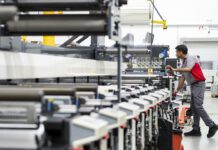
A project seeking to advance the sustainable recovery, re-processing, and reuse of rare-earth magnets was launched in Germany in June 2019.
The European Union (EU)-funded SUSMAGPRO project is scheduled to last four years and will combine wide-ranging expertise in magnets and magnetic assemblies. Project partners include magnets supplier Bunting Europe.
The project recognises the urgency of coming up with effective methods to allow the reuse and recycling of magnets, given the current strain on available resources.
The SUSMAGPRO project (full title: Sustainable Recovery, Reprocessing and Reuse of Rare-Earth Magnets in a Circular Economy) was granted funding from the Horizon 2020 programme of the European Commission (grant agreement no. 821114) and comprises 19 project partners and one associated partner.
Rare-earth magnets are widely used in electronics, automotive, aerospace, e-mobility, wind power generation, consumer goods, and other sectors. The vast majority of rare-earth reserves are located in China and between 2,000 and 3,000 tonnes of rare-earth-elements (REE) are imported into Europe annually. Presently, less than 1% of the imported REE are recycled.
The overall objective of the SUSMAGPRO project is to develop and demonstrate four novel pilot-plant solutions for the clean and sustainable recycling of permanent magnets at Technology Readiness Levels (TRLs) 6–7 (technology or system prototype demonstrated in relevant / operational environment).
And this will support the remanufacturing of secondary REE material into new magnetic products.
Bunting’s role in the project is to market the recycled magnets or magnetic material produced during the recycling process. The firm has decades of experience designing and supplying magnets and magnetic assemblies and the team will seek to maximise the potential for the secondary REE, in whatever form. The Bunting team is working closely with several organisations including the University of Birmingham, who have developed a process of recovering Neodymium powder from scrap hard disk drives.
“Developing a successful rare earth magnet recycling process has the potential to release vast reserves of REE material,” said Chris Riley, Group Magnetics Engineer with Bunting Europe. “Not only are there obvious environmental benefits, but also economic. Using secondary REE materials reduces Europe’s reliance on imports from China.”






